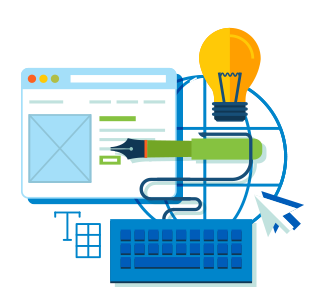Content management
The main keys are content identity, consistency and the creative delivery!
What is a content management system?
A content management system (CMS) is an application that is used to manage web content, allowing multiple contributors to create, edit and publish. Content in a CMS is typically stored in a database and displayed in a presentation layer based on a set of templates
The following are the basic features of a CMS:
- Content creation (allows users to easily create and format content)
- Content storage (stores content in one place, in a consistent fashion)
- Workflow management (assigns privileges and responsibilities based on roles such as authors, editors and admins)
- Publishing (organizes and pushes content live)


Benefits of a content management system
One major advantage of a CMS is its collaborative nature
- Multiple users can log on and contribute, schedule or edit content to be published
- Because the interface is usually browser-based, a CMS can be accessed from anywhere by any number of users.
- When a company uses a CMS to publish its pages, it reduces its reliance on front-end engineers to make changes to the website, making it quicker and easier to publish new content.
- allows non-technical people who don’t know programming languages to easily create and manage their own web content.
- The WYSIWYG editors of a typical content management platform allows users to enter text and upload images without needing to know any HTML or CSS.
Benefits of Content Management
Using content management services, organizations can power consistent and powerful customer communications and derive the following benefits:
- Faster and Easier approach to updating website page- Add/Remove/Update pages easily with changes log register
- Simple and modern user interface/dashboard for editing content eliminates the need of a technical expert- A business user can easily make changes using the configurable dashboard
- Provides efficient workflows, integrated assets and rights management, and efficient storage and retrieval of data
- Customizable templates and designs for easy development of web pages
- Provides a structured workflow based approach and in-house process for publishing content
- Provides complete content security with restricted access and using strong data protection techniques
- Manages meta tags for the web pages for enhanced search engine rankings
- Provides in-built website traffic tracking and analysis system
- Contains Easy meta tag management tool
- Allows multiple publishers to upload content
- Provides easy image upload facility and flash content management system
- Regular and easy archiving of web pages keeps content secure
What Kinds of Websites Can You Build with Those Content Management Systems?
For example, you can use WordPress to power
Static websites
Blogs
eCommerce stores
Forums
Social networks
Online courses
Membership sites
Portfolios
Would you like to start
a project with us?
everything that matters to your success
Offering you every technology that paves your success
